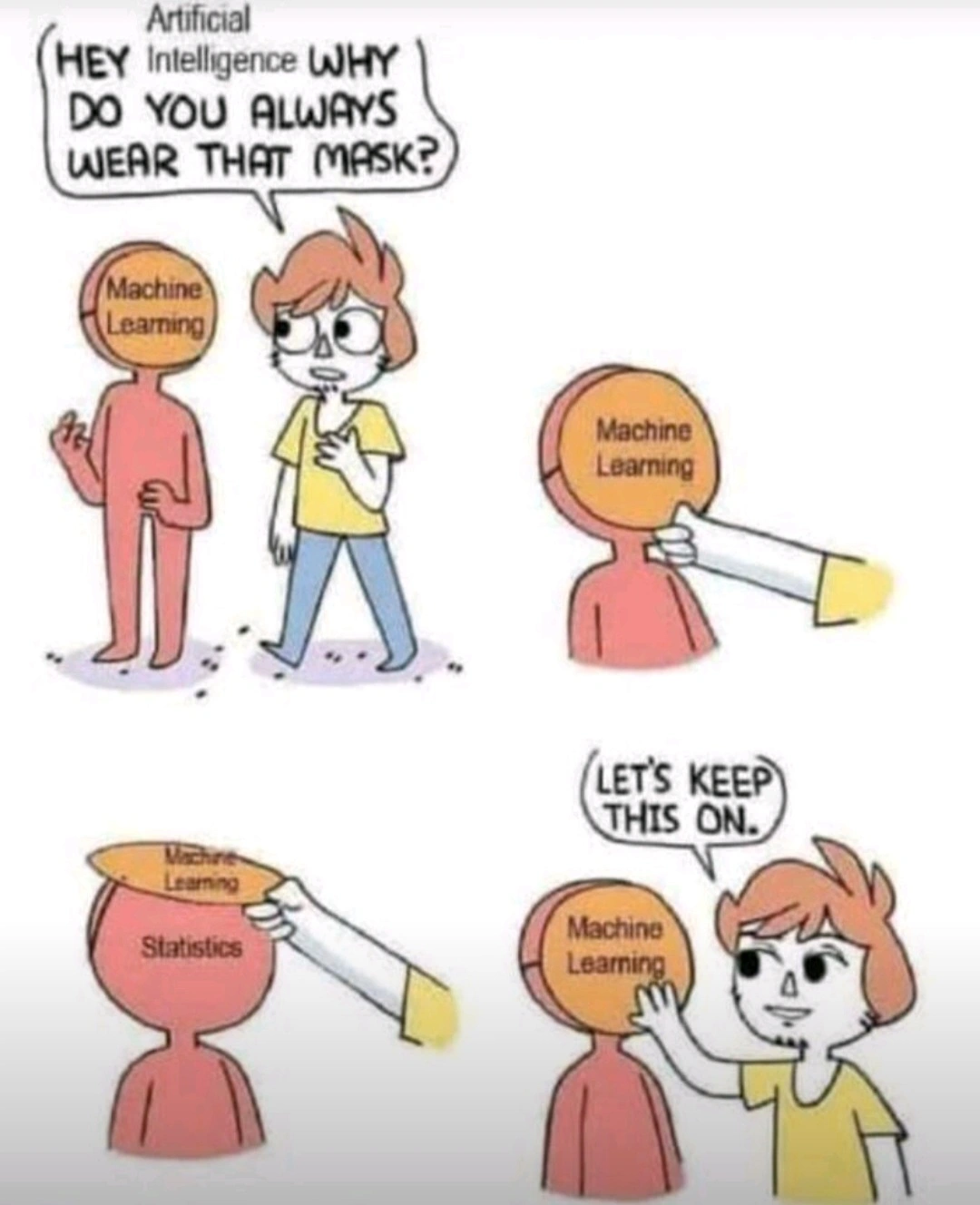this post was submitted on 08 Jul 2024
858 points (96.8% liked)
Science Memes
10694 readers
3374 users here now
Welcome to c/science_memes @ Mander.xyz!
A place for majestic STEMLORD peacocking, as well as memes about the realities of working in a lab.

Rules
- Don't throw mud. Behave like an intellectual and remember the human.
- Keep it rooted (on topic).
- No spam.
- Infographics welcome, get schooled.
Research Committee
Other Mander Communities
Science and Research
Biology and Life Sciences
- [email protected]
- [email protected]
- [email protected]
- [email protected]
- [email protected]
- [email protected]
- [email protected]
- [email protected]
- [email protected]
- [email protected]
- [email protected]
- [email protected]
- [email protected]
- [email protected]
- [email protected]
- [email protected]
- [email protected]
- [email protected]
- [email protected]
- [email protected]
- [email protected]
- [email protected]
- [email protected]
- [email protected]
- !reptiles and [email protected]
Physical Sciences
- [email protected]
- [email protected]
- [email protected]
- [email protected]
- [email protected]
- [email protected]
- [email protected]
- [email protected]
- [email protected]
Humanities and Social Sciences
Practical and Applied Sciences
- !exercise-and [email protected]
- [email protected]
- !self [email protected]
- [email protected]
- [email protected]
- [email protected]
Memes
Miscellaneous
founded 2 years ago
MODERATORS
you are viewing a single comment's thread
view the rest of the comments
view the rest of the comments

In my experience, papers which propose numerical solutions cover in great detail the methodology (which relates to some underlying physical phenomena), and also explain boundary conditions to their solutions. In ML/DL papers, they tend to go over the network architecture in great detail as the network construction is the methodology. But the problem I think is that there’s a disconnect going from raw data to features to outputs. I think physics informed ML models are trying to close this gap somewhat.
As I was reading your comment I was thinking Physics Informed NN’s and then you went there. Nice. I agree.
I’ve built some models that had a solution constrained loss functions—featureA must be between these values, etc. Not quite the same as defining boundary conditions for ODE/PDE solutions but in a way gets to a similar space. Also, ODE/PDE solutions tend to find local minima and short of changing the initial conditions there aren’t very many good ways of overcoming that. Deep learning approaches offer more stochasticity so converge to global solutions more readily (at the risk of overfitting).
The convergence of these fields is exciting to watch.
Yeah, thats a fair point and another appealing reason for DL based methods